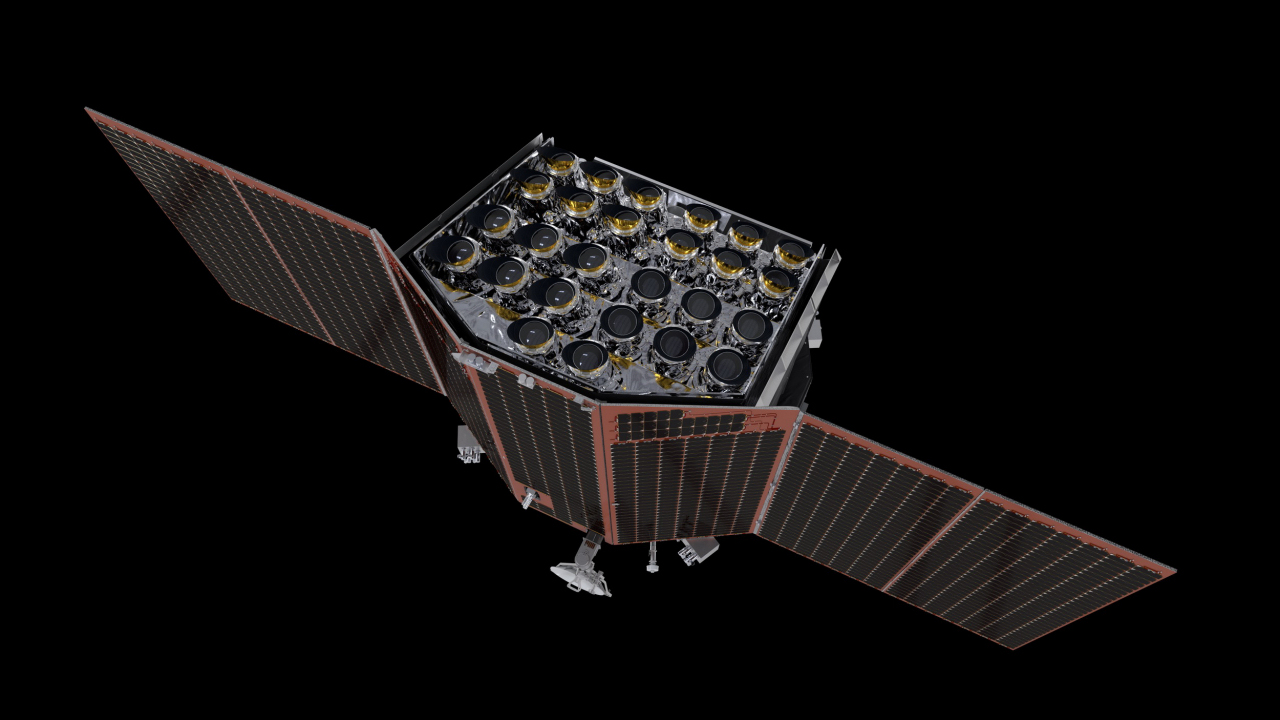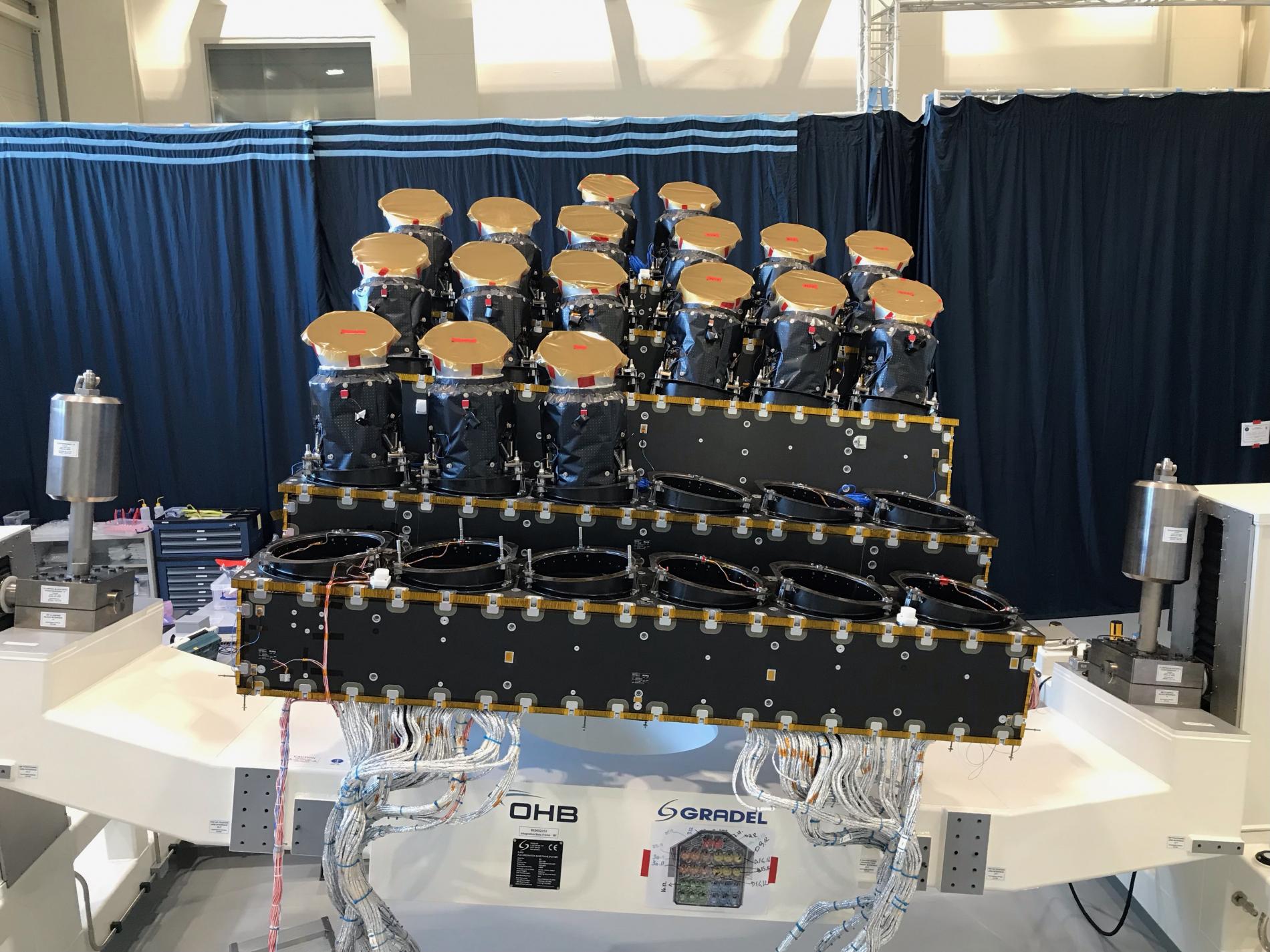Plato exoplanet mission gets green light for next phase
On January 11, ESA's PLATO mission, in which the Institute of Astrophysics of Andalusia (IAA-CSIC) participates, received the green light to continue its development after successfully passing the review of critical milestones
PLATO, which stands for Planetary Transits and Stellar Oscillations, is the third medium-class mission of the European Space Agency (ESA) Cosmic Vision programme. Its objective is to detect and study a large number of extrasolar planetary systems, with a special interest in the properties of terrestrial planets in the habitable zone of Sun-like stars. PLATO is also designed to investigate the seismic activity of stars, which allows the precise characterisation of the planet's host star, including its age.
The mission has just passed an important milestone in its development, a key review that was established specifically for PLATO because of the risks associated with the mass production of the twenty-six cameras that the spacecraft will house.
The review, which ran from July to December 2021, was carried out by more than 100 ESA experts divided into two panels, one for the spacecraft and one for the instrumentation. The review board meeting was held on 11 January 2022. Nearly all aspects of the cameras production, assembly, and testing have been exercised successfully with the tests of structural, engineering and qualification models of the camera units carried out at several European facilities. The thermo-elastic properties of the optical bench, which hosts the cameras, were verified with a novel test technique developed by the spacecraft prime contractor, OHB System AG.
During the review, the maturity of the complete spacecraft segment (spacecraft platform and payload module) was verified by confirming the robustness of the spacecraft-payload interfaces, the payload schedule (with particular attention to the serial production of the 26 cameras) and the robustness of the spacecraft schedule in order to ensure that the established deadlines are met.
With the achievement of this milestone, the second phase of the industrial contract can begin, led by OHB System AG as prime contractor, with Thales Alenia Space (France) and RUAG Space System (Switzerland) as part of the core team.
The delivery of the payload is the responsibility of the European Space Agency in collaboration with a European consortium of institutions and industry, the PLATO Mission Consortium (PMC) in accordance with the Multilateral Agreement established by the participating countries with the Agency.

Spanish participation
Spain is participating with a very significant contribution to the development of the twenty-six PLATO chambers. A consortium of public research centres and aerospace companies, coordinated by researchers from the Centre for Astrobiology (CAB, INTA-CSIC), is responsible for the following elements:
- Structure of the focal planes supporting four large CCD cameras, with a total of more than eighty million pixels in each camera (CAB-INTA-LIDAX).
- Verification and calibration of ten of the cameras under thermal vacuum conditions (INTA/LINES).
- Main electronics units, based on twelve high-powered computers that will perform on-board and real-time data analysis (IAA-CSIC and Thales Alenia Espacio).
- Power units for the on-board computers (IAC-CRISA).
The development of these elements is being funded by the State Research Agency (AEI) and the Centre for the Development of Industrial Technology (CDTI).
In addition, an international scientific team is contributing to the development of the algorithms that will be needed to detect Earth-like planets orbiting in the habitability zone around solar-type stars, as well as to preparatory scientific activities.
"Spanish scientists and aerospace companies are playing a very important role in the development of this important mission, which will allow us for the first time to detect twin planets to Earth, where life could have formed and evolved in a similar way to our planet", says J. Miguel Mas-Hesse, CAB researcher and co-principal investigator of the mission.
"Successful completion of this review allows us to tackle the construction of the units that will fly the mission", says Julio Rodriguez, an engineer at the Institute of Astrophysics of Andalusia (IAA-CSIC) who is leading the centre's participation in PLATO. Each of them must also pass critical design reviews, in particular the main electronics unit (MEU), for which the IAA-CSIC is responsible with the industrial participation of Thales Alenia Space España, and in which the IAC participates in collaboration with CRISA providing the power supplies (PSU) and LESIA (Paris Observatory), which develops the software.
"MEU consists of two boxes, each containing six powerful computers working in parallel to perform the acquisition and scientific processing of the observed stars, all with an extremely low power consumption of around fifty watts each, and a considerably light weight of less than ten kilograms per box", says Julio Rodríguez (IAA-CSIC).

The next step
The next milestone for PLATO is the critical design review of the spacecraft, which will take place in 2023 and will verify the detailed design of the entire spacecraft before assembly.
After the launch, planned for the end of 2026, PLATO will travel into space, specifically to the Lagrange 2 point, 1.5 million kilometres from Earth. From that point, PLATO will observe more than two hundred thousand stars during its operational phase, which will last at least four years, looking for the small, regular decreases in brightness that occur when planets pass in front of the star. Analysis of these transits and starlight variations will allow the properties of the exoplanets and their host stars to be accurately determined.
"After the success of this review, we can continue with this exciting mission that will revolutionise our knowledge of exoplanets up to the size of Earth and open up new fields in the study of the evolution of stars," says Ana Heras, PLATO project scientist at ESA.
Instituto de Astrofísica de Andalucía (IAA-CSIC)
Unidad de Divulgación y Comunicación
Silbia López de Lacalle - sll[arroba]iaa.es - 958230676
https://www.iaa.csic.es
https://divulgacion.iaa.csic.es

